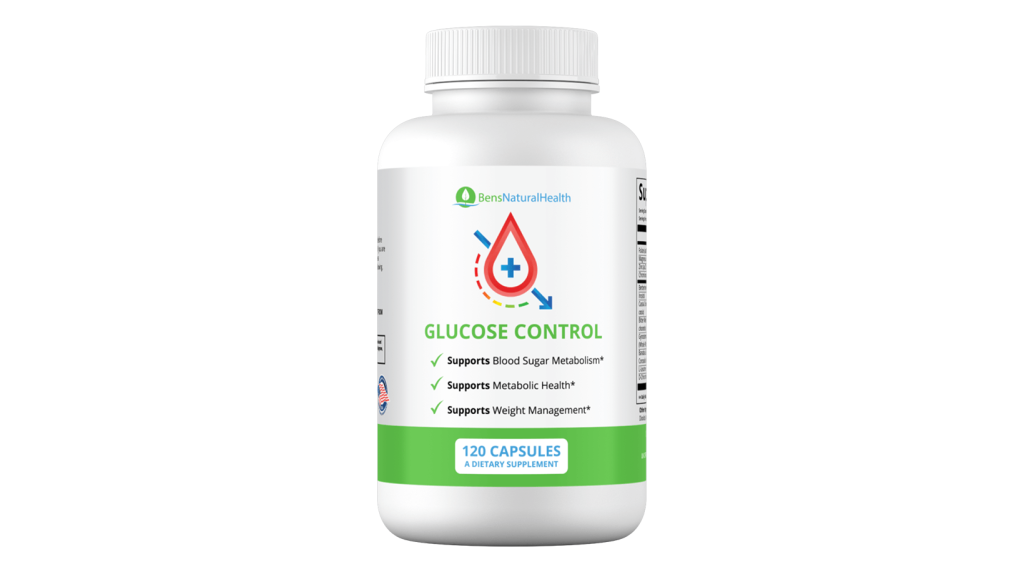Most people try ginger at some point in their lives.
Whether you sipped on a ginger ale as a child with the stomach flu or drank a nourishing ginger tea to relax after a long day at work, you may have even used ginger medicinally.
Ginger is often referred to as a functional food, due to its medicinal qualities and its use in foods.
Ginger is not simply a deliciously spicy root, though. It has a wide range of beneficial effects throughout the body.
The health benefits of ginger are numerous. Ginger is most commonly known for its effect on nausea. But did you know that it can also be helpful for people with diabetes?
Let’s dive right into the relationship between ginger and diabetes.
Get Your FREE Diabetes Diet Plan
- 15 foods to naturally lower blood sugar levels
- 3 day sample meal plan
- Designed exclusively by our nutritionist
What are the benefits of eating ginger if you have diabetes?
Reduce fasting plasma glucose and insulin
Systematic reviews have shown that ginger has significant beneficial effects on glucose control and insulin sensitivity in those with type II diabetes. Ginger has been shown in the research to reduce fasting plasma glucose and insulin in those with type 2 diabetes mellitus.
Improve hemoglobin A1c
In scientific studies, ginger was able to significantly improve hemoglobin A1c from baseline to follow-up as compared to a control group. This shows that ginger can not only help with serum levels of glucose in the short term but over a longer period of time in patients with type 2 diabetes.
Helps with diabetes complications
As we can see, ginger helps directly with blood glucose and insulin levels. However, it is also good at managing potential diabetic complications, as well.
Dry Mouth
One of these examples is dry mouth, which is called xerostomia in the medical world. One study looked at patients with type II diabetes mellitus and measured the amount of saliva in their mouths before and after using a ginger spray. They found that the average amount of saliva increased significantly after using the ginger spray.
Nerve Damage
Nerve damage is another potential complication of diabetes mellitus. This is because the high levels of glucose within the cells lead to oxidative stress. This oxidative stress results in neuronal damage. Ginger has a protective role in the brain of those with diabetes. Ginger helps to protect the brain by reducing oxidative stress.
Brain Damage
Studies also show ginger can reduce inflammatory markers. Ginger also modulates the brain’s response to oxidative injury, which reduces the expression of something called AChE. By doing this, the formation and growth of new nerves are improved. Researchers have concluded that ginger is a potential therapeutic strategy for the treatment of brain damage induced by diabetes.
Glycemic control
Ginger uses various enzymes and receptors to improve high random and fasting blood sugar.
One major potential complication of diabetes is diabetic nephropathy. This is damage to the kidneys caused by diabetes. Oxidative stress plays a significant role in diabetic nephropathy.
In one study, researchers investigated the potential protective effect of ginger rhizome extract on oxidative stress and inflammation as induced by high blood sugar.
In this six-week study, diabetic rats were treated orally with 400 to 800 mg per kg of body weight per day of ginger extract. The rats with diabetes had higher blood glucose levels and HbA1c.
They also had high cholesterol levels. Markers for kidney disease were also elevated in diabetic rats. These included: blood urea nitrogen, serum creatinine, urea, and urine albumin levels.
Treatment with ginger improved high fasting blood glucose levels, high cholesterol levels, and kidney function. Ginger could also minimize cell changes in the kidneys of diabetic rats. Ginger extract could significantly decrease oxidative stress and inflammation in diabetic kidneys.
It was also able to enhance the kidney’s antioxidant defenses. The researchers in this study concluded ginger rhizome extract has a protective role against diabetes-induced injury in the kidneys.
Insulin secretion
Gingerol is a major component of ginger. Past research shows gingerol can help attenuate high blood sugar levels in mice with type 2 diabetes.
Hormonal signaling is involved in the secretion of insulin but is altered in mice with type 2 diabetes. This is insulin resistance or decreased insulin sensitivity. Gingerol was able to significantly restore the disrupted hormone signaling in the study of mice. And there is a science to back up these claims.
Four weeks of treatment with gingerol dramatically increased glucose-stimulated insulin secretion. It also improved glucose tolerance. Gingerol treatment was also able to upregulate and activate enzymes in the islets of the pancreas. The pancreatic islets are critical components of the insulin secretion pathway.
Gingerol is also able to increase the activity of an important enzyme called glycogen synthase 1. This causes improved storage of glycogen within skeletal muscle. This is because treatment with gingerol leads to an increased amount of GLUT 4 transporters on the membranes of skeletal muscle cells.
Overall, gingerol has insulinotropic activity and leads to more glycogen being deposited in the cells of skeletal muscle.
Ginger also stimulates insulin secretion by closing potassium adenosine triphosphate (ATP for short) channels in the beta cells of the pancreas.
Newer research also shows serotonin and particularly the 5 HT receptor channel system are involved in modulating insulin release. Ginger can help with the 5 HT receptor channel system. Therefore, ginger extracts can be used to improve the situation of a patient with diabetes.
Cataract protection
Research shows ginger decreases the lens opacity of diabetic rats.
Diabetic retinopathy is another potential complication of diabetes. But, luckily, ginger has anti-retinopathy properties. This has been confirmed in the research by the increased number of nerve cells in the ganglion cell layer of the eye.
Ginger’s role in diabetic retinopathy was also confirmed by the increased thickness of the total retina and the retinal nuclear layer after ginger therapy.
Advanced glycation end products (called AGE’s for short) are associated with the development of several conditions. One of these is diabetic cataracts. Ginger is one of the few agents that can effectively prevent the formation of AGE.
Feeding ginger to rats in a research study delayed the onset as well as the progression of cataracts in rats. Ginger was able to stop the formation of various AGE products. One of these is carboxymethyl lysine in the lens of the eye.
In this experiment, ginger could also inhibit osmotic stress in the lens-induced by high blood sugar levels.
Accumulation of galactitol in the lens can contribute to the formation of cataracts. Ginger compounds were able to significantly suppress the accumulation of lens galactitol in 30% of the rats in the study.
Other health benefits
Ginger can also benefit the following health conditions, based on research and even clinical trials:
- High cholesterol (improved lipid profile: lower total cholesterol, LDL, triglycerides)
- High blood pressure
- Inflammation
- Nausea
- Arthritis and pain
- Cancer
- Microbial infections
- Allergies
- Cardiac disorders
- Hepatic (liver) disorders (through reduction of lipid peroxidation)
- Obesity and related complications (can be helpful with weight loss)
- Metabolic syndrome
- Rheumatism
- Sprains
- Muscular aches
- Sore throat
- Cramps
- Dementia
- Fever
- Catarrh
- Nervous diseases
- Gingivitis
- Toothache
- Asthma
- Constipation
- Dyspepsia
- Belching
- Bloating
- Gastritis
- Epigastric discomfort
- Gastric ulcers
- Indigestion
- Vomiting
- Gastric ulcers induced by NSAIDs, reserpine, alcohol, stress, vinegar, and H. pylori
- Clots in blood vessels
- Painful menstrual periods
- Coronary heart disease
- Cardiovascular disease
- Celiac disease (helps with symptoms such as bloating, indigestion, etc.)
How to add ginger to your diet
Ginger comes in many forms. You can use powdered ginger in smoothies, cooking, and baking.
You can use the ginger root itself in a stir fry, cooking, or use fresh ginger to make a soothing tea. Or, you can even add it to green tea for additional antioxidant effects. Ginger also comes in gummies, capsules, and tea bags.
The efficacy of steamed ginger is greater than that of ginger extract. Steamed ginger also has a lower level of toxicity than ginger extract.
The Therapeutic Index shows that steamed ginger is also a safer functional food as compared to ginger extract.
In one scientific study, steamed ginger demonstrated a 375% increase in an important compound called 1-dihydro-6-gingerdione compared to the extract
Our Recipe For Homemade Ginger Tea
Our favorite way of getting more ginger into the diet is through fresh, homemade ginger tea. Try our recipe below.
Step 1)
Peel the ginger root.
Tip: the easiest way to do this is by using a spoon.
Step 2)
Slice the ginger as thinly as possible, until you have two tablespoons.
Typically, a two-inch section of the ginger root should get you two tablespoons of sliced ginger. If you prefer to go by weight, two tablespoons are about the equivalent of half an ounce.
Tip: thinner slices give the ginger root more surface area, which makes for a more flavourful tea.
Step 3)
Boil the ginger in 1.5 to 2 cups of water for a minimum of ten minutes.
When we make tea for medicinal purposes, we want to steep the tea for longer than an everyday tea. This is because we want to ensure that all the medicinal properties are being extracted from the root.
Tip: if you want a stronger tasting, tangier tea, then you can even boil the water for 20 minutes or more. You can also use more ginger root for this purpose.
Step 4
Remove the water from the heat, and allow it to cool until drinkable.
At this point, you can add some lemon or lime juice, or a natural sweetener such as agave or maple syrup. Serve.
Top Tips
You can store this tea to drink at a later time. You can drink it either hot or cold.
Do not be afraid to add more ginger. The more, the better, in our opinion! You also don’t need to worry about over steeping ginger tea, as this is what gives it its spicy, tangy taste and great beneficial health effects. Ginger is usually readily available at the grocery store or Asian markets.
You can freeze any ginger root you have leftover and use it at a later time.
You can also make large batches of the recipe above and store them in the fridge in a sealed container. So, you can have double or even triple the recipe on hand in your fridge, ready to drink at any time. You will then have iced ginger tea to drink throughout the week.
Conclusion
Have we convinced you yet? Will you be upping your ginger intake? You can see from this article that there are lots of nuances and layers to the effects that ginger can have on the various enzymes and cell membranes in the body.
Confusing as all that may sound, it is really as simple as this: ginger is anti-inflammatory and can help to improve glycemic control and insulin secretion.
If you are reading this article because you or a loved one is considering using ginger for diabetes, this may be a great choice for you. Even if you do not have diabetes or even pre-diabetes, ginger can have wonderful benefits.
Talk to your health care provider to see if ginger might be a great choice for you. If adding it to the diet is difficult for you, then a supplement in capsule or tablet form may work. Again, speak to your health care provider to determine what dose would be right for you.
Ben’s Natural Type 2 Diabetes Supplement: Glucose Control
Ben’s Glucose Control is a natural supplement for type 2 diabetes, containing clinically proven, natural ingredients to help stabilize and maintain optimal blood sugar levels.

Glucose Control works to regenerate your pancreas, aid weight loss, alleviate diabetic symptoms, prevent oxidative damage and prevent the progression of diabetes.







